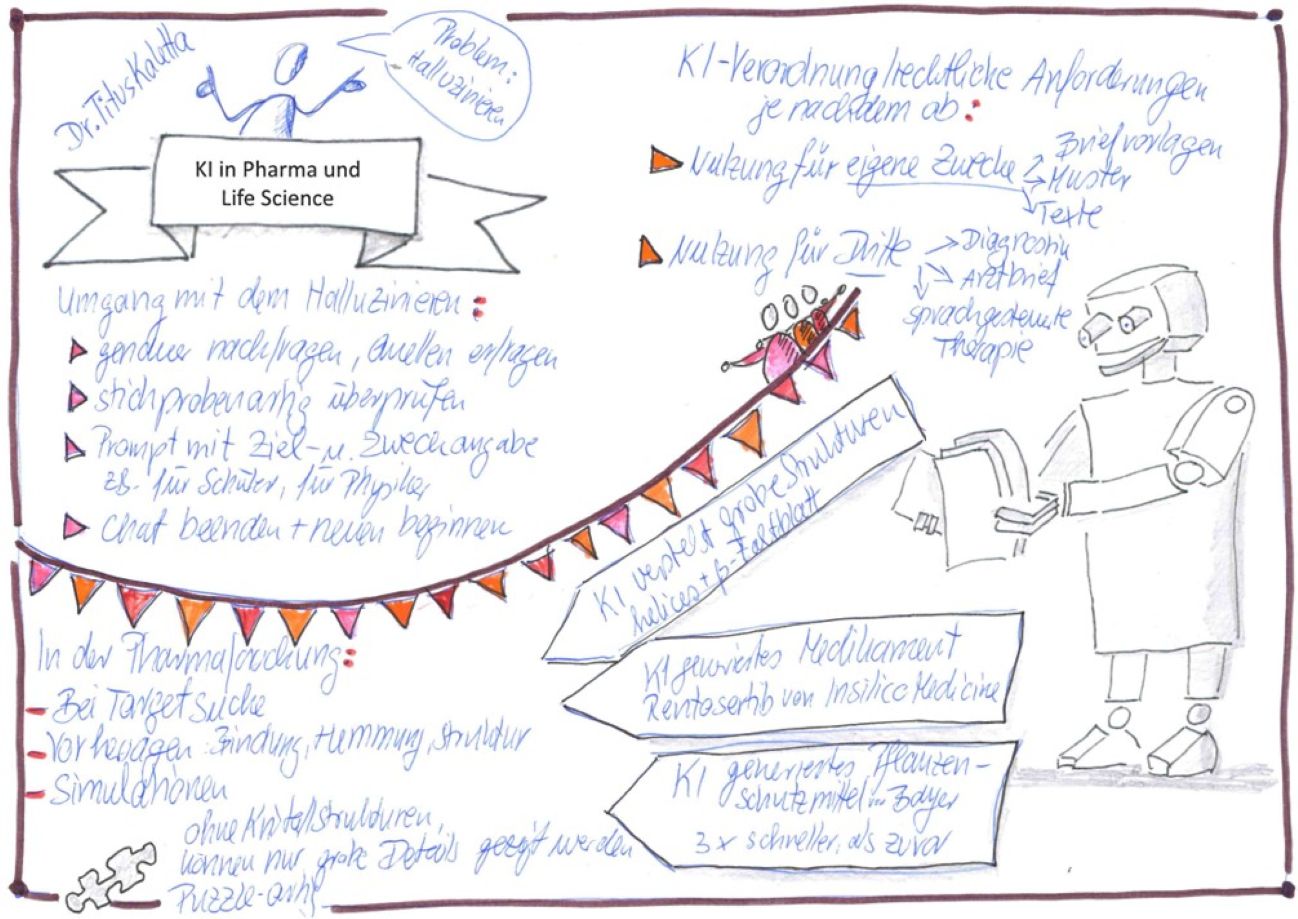It is undisputed that artificial intelligence (AI) has long since reached all areas of research, but what needs to be considered when starting a business and what challenges are involved? What is the current situation regarding the use of AI in pharmacy and life sciences?
Dr. Titus Kaletta spoke on this topic on September 4, 2025, as part of the GO-Bio initial seminar series, and began by addressing the current state of AI models and their challenges, particularly when it comes to hallucination. Despite all the optimism about the diverse applications of AI, Dr. Kaletta advised participants to remain skeptical and to randomly check what AI delivers. He provided numerous practical tips on how to check whether an AI statement is “correct” or whether it has hallucinated. He also gave extensive tips on how to improve one's own prompts in a targeted manner, e.g., through HTML or temperature specifications.
Dr. Kaletta also referred to the new AI regulation and explained that there is a significant difference between using AI for one's own purposes and using it for third parties, e.g., for medical diagnoses, doctor's letters, or similar.
According to Dr. Kaletta, AI has been used successfully in pharmaceutical research for over 10 years, particularly in target identification, various simulations and predictions, and when it comes to processing large amounts of data. In general, the more data the AI models receive for learning, the better the results achieved by AI. This is evident, for example, in structure predictions, which are often only rough sketches. Dr. Kaletta also reported on the drug Rentosertib (also known as ISM001-055). It is the first drug to be developed entirely by AI, with both the biological target molecule and the active ingredient being identified and designed by AI. Rentosertib is an investigational drug for the treatment of idiopathic pulmonary fibrosis (IPF), a severe and fatal lung disease that leads to progressive scarring of the lungs. Here, it inhibits the enzyme TNIK (TRAF2- and NCK-interacting kinase), which plays a key role in fibrosis and may thus improve lung function.
In the ensuing discussion, Dr. Kaletta patiently answered all questions from the participants and referred to the follow-up events in the GO-Bio initial seminar series.


